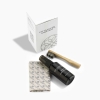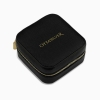
The lapis lazuli are used as jewelry and ornaments from the earliest ages. Lapis Lazuli, mostly used in ancient Egyptian and Pharaonic times, is generally dark blue - navy blue. It is light to dark blue but only in blue. It has yellow metallic pigments on it. These pyrites are just another stone. They are not gold fragments. Lapis Lazuli is very valuable even though it is a stone that is not found in nature. It is formed by the combination of several minerals and takes the blue color from these minerals. But it is not a mineral itself but a rock.
Lapis lazuli stones with yellow pyrite gleaming on them are more valuable than others. Some lapis have white calcite veins, which reduces the value of lapis. Generally known as dark blue–navy blue, lapis gives H2S gas when it encounters hydrochloric acid. The smell of this gas is like rotten eggs. The presence of pyrite in the stone is often important to distinguish natural lapis lazuli from many lapis imitation. The most valuable lapis lazuli stone is taken out in Afghanistan. In addition, America, Pakistan, Italy, Canada, Siberia, Angola, Chile, and Switzerland is also released.
For whatever purpose you use your stone, do not carry it continuously. The effect is reduced because your body will be accustomed to the effect of the stone when you carry it around you continuously. Avoid water and soap to clean your stone. Because water will cause the matting of your lapis stone. You just have to leave the sunlight to clear your stone.


